The past year has been extremely challenging for revenue leaders to keep their businesses afloat. With crunched budgets and a volatile economic environment, businesses are constantly looking out for ways to increase their revenue while keeping costs low.
And retaining customers has emerged as a top priority. As high as 87% of businesses are prioritizing retention. Because it is 5 times more expensive to attract new customers than it is to retain existing ones.
Even a small 5% increase in retention can lower costs by as much as 10% and increase profits by 20% to 90%.
But here’s the bad news.
Customer churn rates have been on the rise as businesses attempt to adjust to new market realities.
According to a recent study, 64% of respondents expect their churn to increase this year.
Businesses that are prioritizing profitable growth are investing in initiatives that lower this churn rate.
Customer success teams are at the frontline of managing this churn. And they need the right strategy to de-risk this path to profitable growth
Access to the right activity data and predictive signals lies at the heart of this.
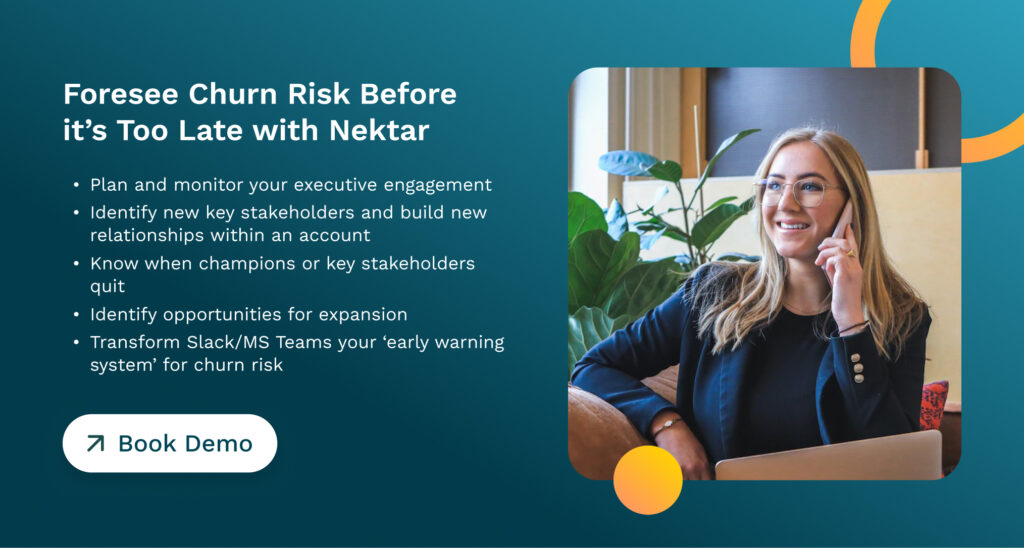
The Powerful Role of Relationship Insights
Prevention of churn requires customer success teams to be proactive, rather than reactive. They need to understand what are the customer interactions and behaviors at a micro level.
And how can that help them as Customer Success leaders to provide more insights to their stakeholders.

Despite so many technological advancements towards revenue generation in B2B SaaS, why are businesses still struggling to address their churn rates?
The answer lies in the unavailability of activity data, resulting in a lack of visibility into account health. This problem gets magnified by the CS tools that teams use to manage customers.
Customer success teams use CRM tools like Salesforce and Gainsight to manage their customer information. But most of these tools require Customer Success Managers to manually input data.
This leaves systems like CRMs with critical data gaps such as lack of information relating to:
1. Buying Groups
Every decision to renew a product or service is no longer restricted to just one champion. It is a cross-departmental exercise. If your champion is in the RevOps team, chances are high that members from legal, marketing, finance or any other team can also be involved in the decision to renew. This becomes more complicated when users of the product are different from those purchasing the product.
Having a clear view of who these internal stakeholders are, and keeping your customer success teams on top of their needs, behaviours and requirements is a major factor to prevent churn.
2. Contact Level Activities
Customer success leaders must have clear visibility into the activities their managers are undertaking on a daily basis.
Are they engaging with the right people in the right accounts?
Are they also frequently engaging the executive sponsors through MBRs and QBRs?
Are they on top of the use cases that the customers have expressed interest upon?
Are they constantly delivering on the expectations of the customers in the account?
Are they taking appropriate action on identifying opportunities for renewal and expansion?
Customer success leaders need access to such data so that they can correct the behaviour and patterns of their teams at the right time.
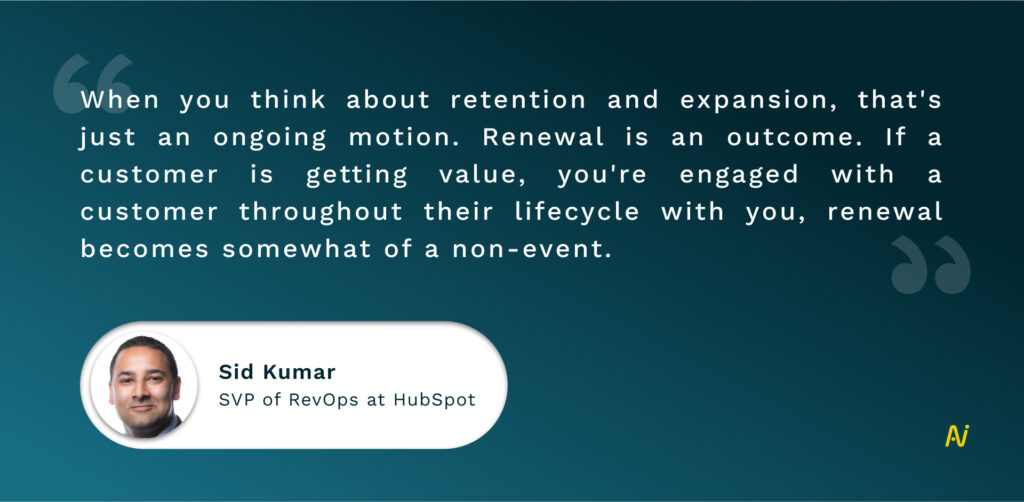
3. Champion or Executive Movement
Keeping track of executive or champion movement within an account is oftentimes the most underutilized insight to prevent churn. When a champion switches jobs, they often leave customer success teams scrambling to find someone else who can see the same kind of value in your solution and defend the budget for it.
Knowing when a champion leaves is critical to devise strategies to keep all stakeholders in the account see real value in your solution.
Similarly, it’s equally important for customer success teams to know who is the new replacement. It’s important to get the right introductions to new entrants early on to not let the chances of churn increase in that account.
Having access to this data is crucial to understand what is really going on within an account. And whether it is on the path to churning in the next renewal cycle. The longer customer success teams wait to have this data, the harder it will be to fight churn.
This impacts their ability to effectively monitor and enhance customer engagement to achieve customer retention goals and take pre-emptive actions to avoid potential churn risks.
Customer Success Checklist to Prevent Churn
In order to mitigate churn risk, you have to be proactive and rely on predictive signals coming from high-quality data. Here are some of the top tips shared by Sid Kumar, SVP RevOps at Hubspot:
1. Stay in touch with how your customers are thinking and how they are using your solution.
2. Identify if you are closed with your POCs and executive stakeholders at those accounts.
3. Be close to the pulse of the customer. Know how their business is evolving through everything that is happening in the macro environment. Help them navigate those changes with your solution.
4. Have data that you can turn into insights and predictive signals. This is where you start to look at the different elements of customer behavior and some signals around intent and bringing those together.
Look at what are the signals you’re getting from a digital standpoint, from a usage standpoint around how that customer is operating. You bring that qualitative and some of the quantitative signals together and it gives you a more holistic picture of what that engagement needs to look like.
5. Define how you are going to engage.
What does your coverage model look like? The role of digital engagement and one to many engagement is really important.
Think about where a human needs to be involved. Where do you leverage AI and other scaled engagement models? Those are the variables that go into that equation. It’s going to differ by company, by type of sale/customer/segment you go after.
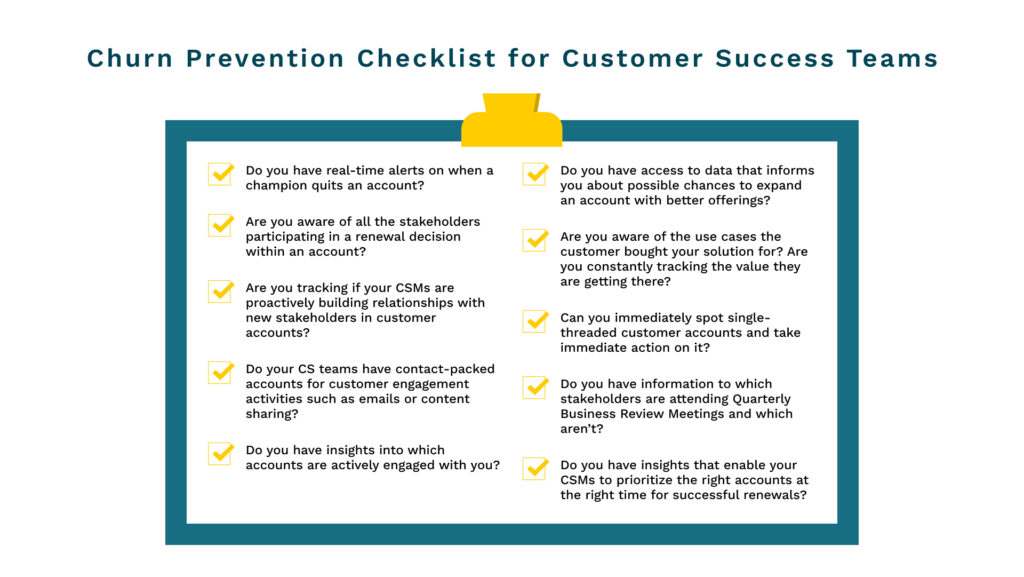
Fight Churn With Data Capture and Intelligence Layer Built for Customer Success Leaders
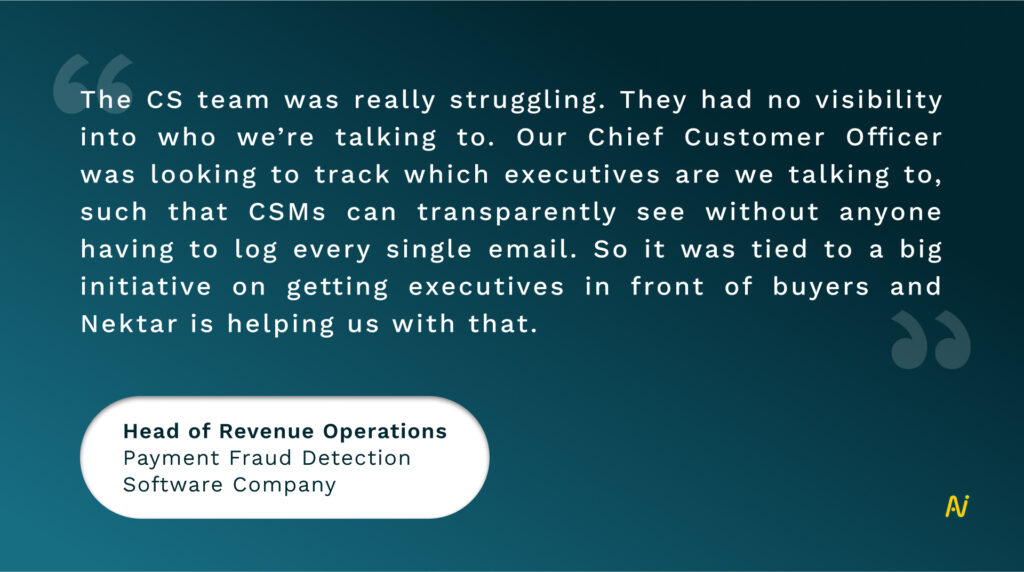
Nektar’s data capture and intelligence layer is purpose built for Customer Success leaders. It allows them to foresee churn risk and take a data-driven approach to renewals and expansion.
Nektar solves the data gap by integrating with customer-facing interactions (Emails, Calendars, Zoom, Slack) through APIs. It cross-references this data against Salesforce & Gainsight or similar tools to find the missing data gaps and automatically updates Salesforce with this valuable customer information. It also alerts relevant folks on Slack/Teams to take the next best actions based on the Sales & CS playbooks.
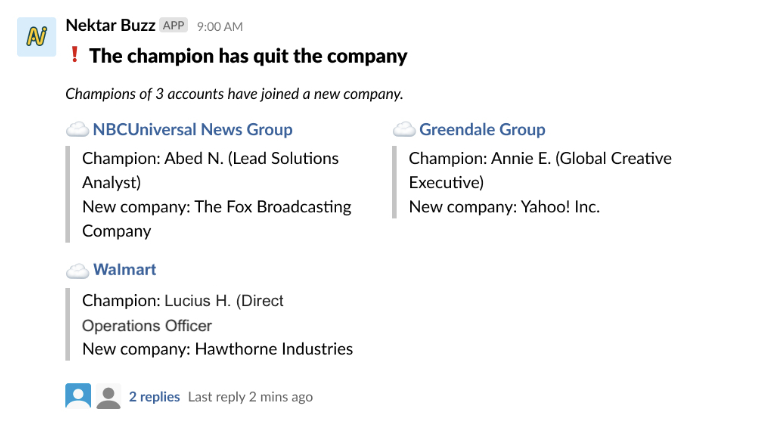
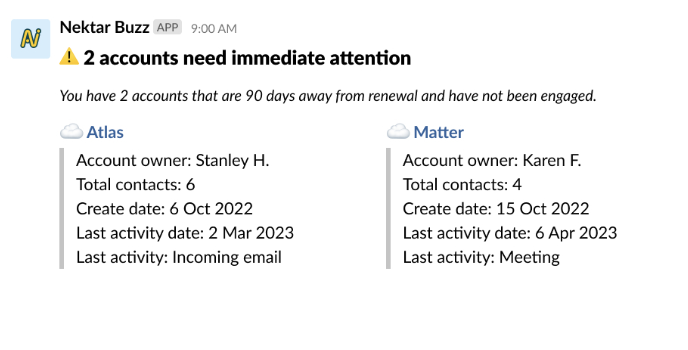
Check out this USE CASE for Customer Success.
Here’s a look at how Nektar Automates Contact Data Using AI.

With Nektar, you can:
- Automatically capture every CSM activity
- Plan and monitor your executive engagement
- Encourage consistent engagement with each stakeholder
- Spot single-threaded customer accounts
- Prevent churn risk when champions quit
- Prioritize the right customers
If churn is a problem your business is currently struggling with, speak to our experts on how to tackle it with a data-first approach.







